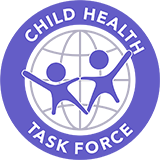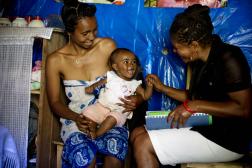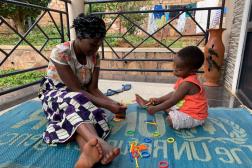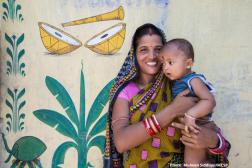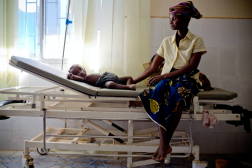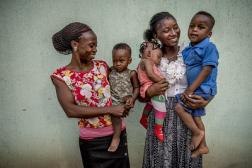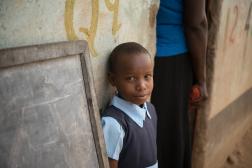2022
| Special Update
School as a Platform to Control Malaria: The case for cross-sectoral investment
In honor of World Malaria Day, the Child Health Task Force in collaboration with USAID has released an infographic to highlight the importance of school-based malaria prevention and treatment. View the infographic here!
| Blog
Governments across Africa are rebuilding home-grown school feeding (HGSF) programs to help their recovery from the pandemic
The Brookings Institution published a blog on Africa Day of School Feeding which discusses the role of home-grown school feeding in responding to the COVID-19 pandemic. Read the blog here.
| Quarterly Newsletter
Winter 2022 Newsletter
In this issue we summarize the TF members' meeting and responses to member feedback; share highlights of the TF Steering Committee; introduce new SC members; spotlight TF member Rodgers Gift Benkele; and give an overview of subgroup 2022 plans.
| Webinar
How to Make Better Policies for School Meals
The OECD Trade and Agriculture Directorate hosted a webinar focused on how to overcome evidence gaps in food systems to support policy makers around the world develop better policies for food systems. Watch the recording here.
| Journal Article
Eligibility for the use of ready-made spectacles among children in a school-based programme in Ghana
A cross-sectional study on a low-cost vision care intervention in public junior high schools in Bongo district, Ghana was published in PLOS Global Public Health. Read the full article here!
2021
| Webinar
Multisectoral Collaboration for Children
The Re-imagining the Package of Care for Children subgroup hosted a webinar on October 19 at 12pm EDT to share findings from interviews with USAID Africa Missions and other partners operationalizing school health and nutrition. Access the recording and presentation from the webinar here!
| Report
Operationalizing Health & Education Coordination
A new report has been published on the Child Health Task Force website sharing recommendations for operationalizing school health and nutrition that emerged from interviews with USAID Africa Missions. It answers the question: How do countries, practitioners, and development partners bridge the gap between knowing 'what to do' and 'how to do it' when it comes to school health? Read full report here!
| Quarterly Newsletter
Summer 2021 Newsletter
In this newsletter, we share with you the Task Force’s first strategic plan (2021-2025) that will guide our work over the next five years.
| Blog
Getting School Health Right in Low- and Middle-Income Countries
Think Global Health published a blog on the COVID-19 disruptions to children's and adolescent's learning and access to school health and nutrition services. The piece also discusses the importance of school health programming and investments beyond COVID-19, challenges in implementation, and critical actions for individuals and organizations to promote and advocate for comprehensive health services in schools.
| Report
Brief: Sustaining Adolescent Health Service Delivery During Prolonged School Closures
In light of the COVID-19 pandemic, the GFF published a brief highlighting approaches to sustain the delivery of school health and nutrition services to adolescents during school closures. The report also presents considerations for the resumption of school-based service delivery upon reopening.
| Journal Article
New Publication: Considerations for Monitoring School Health and Nutrition Programs
Recently Frontiers in Public Health published an article on monitoring programs in school health and nutrition (SHN), addressing a major gap in the literature. Key aspects of SHN program monitoring are explored, including: (1) why monitor; (2) what to measure; (3) how to measure; and (4) who measures. Read the full-text article here.
| Webinar
Global Launch: Making every school a health-promoting school
The World Health Organization (WHO) and United Nations Educational, Scientific and Cultural Organization (UNESCO) are hosting a global launch event to introduce the Health-Promoting Schools initiative and newly developed guidance. Join the call on Tuesday, June 22 at 1pm CEST/7am EDT by registering here!
| Quarterly Newsletter
Spring 2021 Newsletter
In this issue we share the Re-imagining TA country case studies; give an update on a new resource page; recap the bi-annual Steering Committee meeting held in March; spotlight the Implementation Science subgroup; and share resources from the network and upcoming events.
| Press Release
Research Consortium for School Health and Nutrition
The London School of Hygiene and Tropical Medicine launched a research consortium on school health and nutrition on May 27th, 2021. Watch recordings from the launch event here! The Research Consortium is a global, multi-sectoral partnership of academic, scientific and technical institutions and individuals, to promote quality research on the health, nutrition, well-being, education and development of school age children and adolescents. You can learn more about the initiative on their website.
| Special Update
Understanding Child Health in the Context of COVID-19
Much of the published data and focus of the COVID-19 pandemic has been on adult patients, leaving behind a large knowledge gap for child health service providers and global partners assisting in the pandemic response. The body of information regarding clinical features of the coronavirus in children and adolescents is growing, but questions remain.
| Webinar
Webinar on Global Standards
WHO organized a webinar (February 2021) to debut its updated global standards for health promoting schools.
| Report
State of School Feeding Worldwide 2020
WFP launched its State of School Feeding Worldwide report (February 2021). The report finds that between 2013 and 2020, the number of children receiving school meals grew by 9 percent globally and 36 percent in low-income countries, as governments expanded their programmes and made school feeding the world’s most extensive social safety net. The report also estimates that school meals programmes yield returns of up to US$ 9 for every US$ 1 invested.
| Quarterly Newsletter
Winter 2021 Newsletter
In this edition we share priorities for the new year, feedback from the 2020 members' survey and meeting, a tutorial on how to access resources on the website, a school health & nutrition blog, COVID-19 updates, a recap of recent webinars, summary of a private sector CHNRI exercise, subgroups' 2021 priorities, news from the newtwork and upcoming events.
| Press Release
Nutrition crisis looms as globally more than 39 billion in-school meals missed since start of COVID-19 pandemic – UNICEF and WFP
In January 2021, UNICEF and WFP estimated that 39 billion in-school meals have been missed since the start of the COVID-19 pandemic, highlighting the important role schools play in delivering routine services to vulnerable children.
2020
| Special Update
Meeting Children Where They Are: School Health & Nutrition in a Global Pandemic
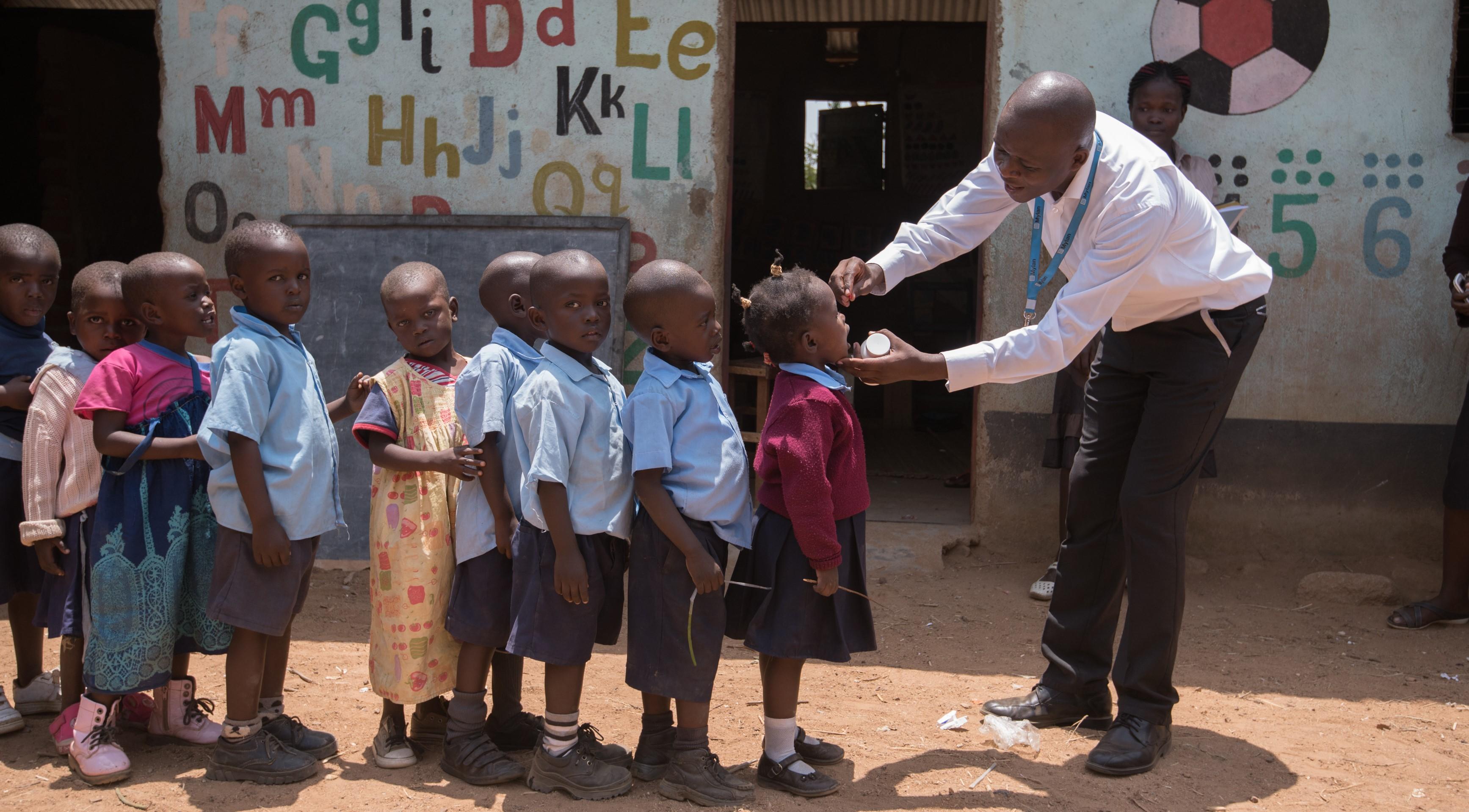
By: Luke Shors and Linda Schultz
2020 has been a somber year for children and adolescents worldwide. Although children – particularly young children – have been less susceptible to severe illness due to COVID-19 itself, they have been equally subject to the political, social and economic ramifications left in the pandemic’s wake.
According to UNICEF, by the fall of 2020, 1.5 billion children were estimated to be impacted by school closures with 463 million children and adolescents unable to access distance education and remote learning. There is a very real concern that millions of these students may not return when schools reopen. These statistics, and the individual stories that accompany them, require us to reflect on the challenges ahead, particularly as we recognize World Children’s Day today, November 20th.
Undoing these harms - during and beyond the current pandemic - will demand the collective action of governments, organizations, teachers and all those concerned with children and adolescents’ education and health around the world. One of the key challenges is to protect education gains achieved to date while also supporting students’ physical health, nutritional status, and mental wellbeing.
The Child Health Task Force recently revamped the Re-Imagining the Package of Care Sub-Group, which is bringing together actors working to maximize each child's health and development. In recognition of the recent WHO-UNICEF-Lancet Commission, this Sub-Group is particularly keen to glean experiences from country-led multi-sectoral approaches to put the child at the center of holistic development objectives. An area of focus for this Child Health Task Force Sub-Group is school health and nutrition.
School health and nutrition has long been celebrated for its ability to deliver health and nutrition services at low cost simply by targeting children where they are and by reducing the burden on an already stretched health care system. Prior work commissioned by the USAID Bureau for Africa has demonstrated the value of school health and nutrition to improve human capital accumulation, particularly when delivered within a holistic program. However, the current pandemic puts severe restrictions on this model of service delivery with widespread school closures.
If the prerequisite of school health and nutrition delivery is meeting kids where they are, then these programs must adapt when schools experience prolonged closures, whether for a pandemic, natural disaster, or conflict. In the course of the global COVID-19 pandemic, we have seen emerging examples of how school closures and other related restrictions on movement have forced the traditional approaches of reaching school children -- whether pedagogical and instructional methods or the delivery of school meals -- to adapt and innovate.
As an example of an adaptation during COVID-19, the World Food Program has identified 79 countries that have adjusted school feeding programs. These adaptations have largely included take-home rations or cash transfers for students’ families, with some examples of teachers involved in delivering rations directly to families. Healthy Learners, which supports the Zambian Ministries of Health and General Education to deliver health and nutrition services to Lusaka primary schools, has also adapted its programmatic operations in response to COVID-19. Specifically, Healthy Learners has partnered with the school health workers to disseminate accurate health information, supported the Zambia Ministry of Health and CDC to leverage schools as hubs for disease surveillance, and collaborated with both the health and education ministries to develop Zambia’s COVID-19 guidelines for safe school reopening.
Some of the innovations that served as stop-gap measures for health and nutrition service delivery in the current crisis will have value when the school gates reopen. For instance, the present pandemic has catalyzed closer collaboration between the education, health, and water sectors to ensure schools are health promoting environments upon reopening. Recognizing that handwashing with clean water and soap is an effective measure to limit community transmission of COVID-19, as well as other communicable diseases, USAID/Senegal’s Education and WASH teams are collaborating to establish the School Water Integrated Solutions for Health investment, devoting approximately $2 million to water needs in schools in the Matam Region. The activity will improve students’ learning conditions through better access to water at hand-washing stations, including adding or rehabilitating micro-boreholes with solar pumps and by bringing water to schools in arid areas with the help of donkey-drawn water carts. These investments will be coupled with school hygiene education.
We can easily imagine that the inroads made in hybrid or flexible service delivery models to reach students who are temporarily out-of-school could in theory be utilized to reach all those who have left or will later leave schooling. More critically, these specific efforts borne out of necessity in responding to the pandemic can contribute to the creation or strengthening of comprehensive school health and nutrition policies and frameworks at national levels. These policies and frameworks, once established and implemented with multisector buy-in, can support children where they are and adapt over time to best respond to the specific health priorities and challenges.
The opportunity now is to use the COVID-19 crisis as a springboard to longer-term and more comprehensive solutions needed to foster school health and nutrition. Children’s wellbeing demands a commitment to consolidating this knowledge and know-how, translating responses to the pandemic into thorough policies and frameworks that outlast it, and making these innovations available to all actors concerned with school health and nutrition.
-----
About the authors:
Luke Shors is a researcher, consultant, and writer who focuses on global health, education, and climate. Mr. Shors supported the World Bank Health Financing Global Solutions Group in its COVID-19 response and has experience supporting and evaluating various school health programs, including USAID SHN and UNICEF's Child Friendly Schools. He holds a Doctorate from the Harvard Graduate School of Education and a joint MPH/MBA from Johns Hopkins University.
Linda Schultz is a school health and nutrition expert with experience consulting for the World Bank, the Global Financing Facility, the World Health Organization, the Bill & Melinda Gates Foundation, and USAID. Ms. Schultz was the lead author of two prior USAID-commissioned reports, Human Capital Investments: The Case for Education and Health in Sub-Saharan Africa and Maximizing Human Capital by Aligning Investment in Health and Education. Ms. Schultz also contributed to and coordinated the DCP3 Child and Adolescent Health and Development volume. She holds an MPH from the University of Michigan.
